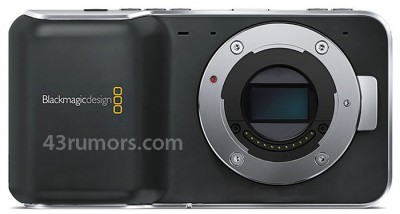


While shooting wide open to achieve shallow depth of field can be a very deliberate effect, it can also be a much less welcome side effect if you are shooting at fast aperture purely for the purpose of gathering more light, you don't necessarily want everything to be blurry. However, while this creates a striking cinematic look, this isn't always welcome. As we all know, full frame sensors deliver beautifully shallow depth of field, enabling you to blur out backgrounds and isolate subjects when shooting at wide apertures. Of course, low light can be mitigated by fast lenses and wide apertures – and this is, again, an area where the difference in sensor size is quite pronounced. Indeed, while the Sony A1 boasts 15 stops of dynamic range and a native top ISO of 32,000, the Blackmagic 6K Pro claims 13 stops and dual native ISO up to 25,600. This manifests as better dynamic range and higher ISO sensitivity. These larger sites, having greater physical surface area, are thus able to capture more light – in turn delivering cleaner low light performance and less noise than the smaller sites on a Super 35 sensor. Even shooting at the exact same resolution, whether it's 6K or 4K, the fact that the A1 has a larger sensor means that the individual photosites will be larger. However, there are a number of benefits that full-frame video possess over that shot on Super 35 – the most obvious one being the larger pixels. And on the one hand, that has some benefits Canon was quick to point out, for example, that the APS-C sized 4K video on the original Canon EOS R (opens in new tab) cut together well with Super 35 footage shot on its cinema cameras. Super 35 is a smaller sensor format, broadly similar in size to APS-C. And here is the biggest rub the Sony A1 possesses a full-frame image sensor, while the Blackmagic has a Super 35 sensor. So, just how much do you really need to oversample your 4K footage? Sensor sizeīeyond the mere question of resolution, and what you do with it, though, is the canvas on which that resolution is captured. Still, you can already achieve that with 6K – cameras like the Panasonic S1H (opens in new tab) can already downscale 6K video to deliver an insane amount of detail. No, the real point of 8K at this moment in time is twofold: to provide enough resolution to crop into the frame (to frame close-ups in an interview, for example) or to produce oversampled 4K video – that is, 4K video that is downscaled from an ultra-dense 8K readout.

Unless you're lucky enough to have an 8K display, you can't even watch 8K content yet. Of course, the fact of the matter is that 8K in and of itself isn't actually the point – at least, not in 2021. And to the all-important eyeball test, a 6K file is so pixel-rich that the perceptible gains of the extra 2K resolution really aren't that great. The fact is that 6K is already overkill in terms of resolution 8K is like bringing a grenade to a knife fight.


 0 kommentar(er)
0 kommentar(er)
